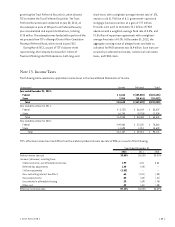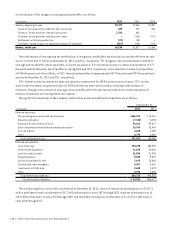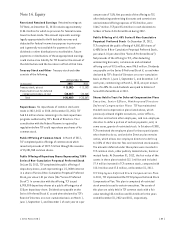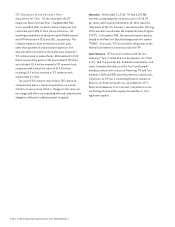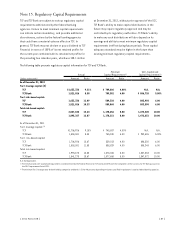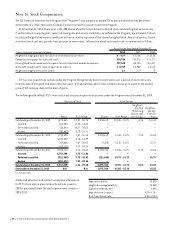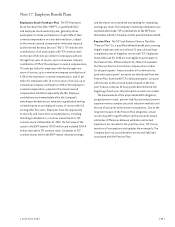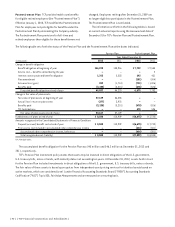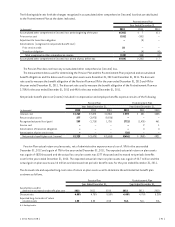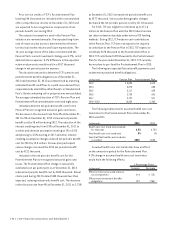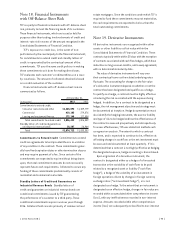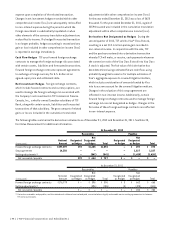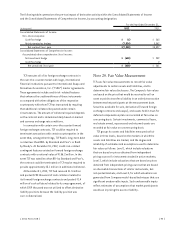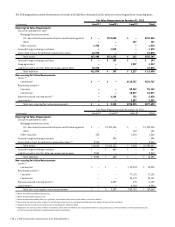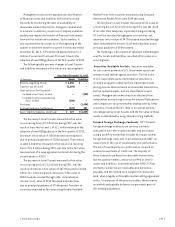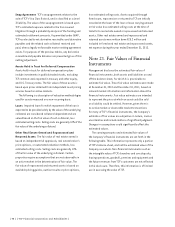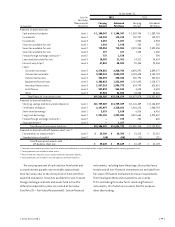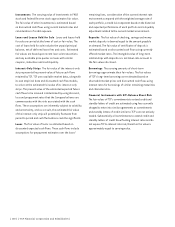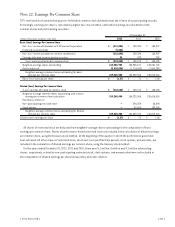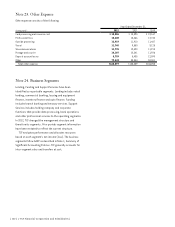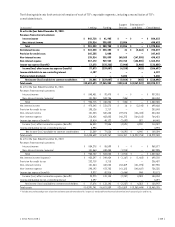TCF Bank 2012 Annual Report Download - page 109
Download and view the complete annual report
Please find page 109 of the 2012 TCF Bank annual report below. You can navigate through the pages in the report by either clicking on the pages listed below, or by using the keyword search tool below to find specific information within the annual report.
Note 18. Financial Instruments
with Off-Balance Sheet Risk
TCF is a party to financial instruments with off-balance sheet
risk, primarily to meet the financing needs of its customers.
These financial instruments, which are issued or held for
purposes other than trading, involve elements of credit and
interest-rate risk in excess of the amount recognized in the
Consolidated Statements of Financial Condition.
TCF’s exposure to credit loss, in the event of non-
performance by the counterparty to the financial instrument,
for commitments to extend credit and standby letters of
credit is represented by the contractual amount of the
commitments. TCF uses the same credit policies in making
these commitments as it does for making direct loans.
TCF evaluates each customer’s creditworthiness on a case-
by-case basis. The amount of collateral obtained is based
on a credit evaluation of the customer.
Financial instruments with off-balance sheet risk are
summarized as follows.
At December 31,
(In thousands) 2012 2011
Commitments to extend credit:
Consumer real estate and other $1,265,092 $1,349,779
Commercial 419,185 279,076
Leasing and equipment finance 172,148 177,534
Total commitments to extend credit 1,856,425 1,806,389
Standby letters of credit and guarantees
on industrial revenue bonds 18,287 26,964
Total $1,874,712 $1,833,353
Commitments to Extend Credit Commitments to extend
credit are agreements to lend provided there is no violation
of any condition in the contract. These commitments gener-
ally have fixed expiration dates or other termination clauses
and may require payment of a fee. Since certain of the
commitments are expected to expire without being drawn
upon, the total commitment amounts do not necessarily
represent future cash requirements. Collateral to secure any
funding of these commitments predominantly consists of
residential and commercial real estate.
Standby Letters of Credit and Guarantees on
Industrial Revenue Bonds Standby letters of
credit and guarantees on industrial revenue bonds are
conditional commitments issued by TCF guaranteeing
the performance of a customer to a third party. These
conditional commitments expire in various years through
2016. Collateral held consists primarily of commercial real
estate mortgages. Since the conditions under which TCF is
required to fund these commitments may not materialize,
the cash requirements are expected to be less than the
total outstanding commitments.
Note 19. Derivative Instruments
All derivative instruments are recognized within other
assets or other liabilities at fair value within the
Consolidated Statements of Financial Condition. These
contracts typically settle within 30 days with the exception
of contracts associated with cash flow hedges, which have
maturities as long as seven months, and a swap agreement,
with no determinable maturity date.
The value of derivative instruments will vary over
their contractual terms as the related underlying rates
fluctuate. The accounting for changes in the fair value
of a derivative instrument depends on whether or not the
contract has been designated and qualifies as a hedge.
To qualify as a hedge, a contract must be highly effective
at reducing the risk associated with the exposure being
hedged. In addition, for a contract to be designated as a
hedge, the risk management objective and strategy must
be documented at inception. Hedge documentation must
also identify the hedging instrument, the asset or liability
and type of risk to be hedged and how the effectiveness of
the contract is assessed prospectively and retrospectively.
To assess effectiveness, TCF uses statistical methods such
as regression analysis. The extent to which a contract
has been, and is expected to continue to be, effective at
offsetting changes in cash flows or the net investment must
be assessed and documented at least quarterly. If it is
determined that a contract is not highly effective at hedging
the designated exposure, hedge accounting is discontinued.
Upon origination of a derivative instrument, the
contract is designated either as a hedge of a forecasted
transaction or the variability of cash flows to be paid
related to a recognized asset or liability (“cash flow
hedge”), a hedge of the volatility of an investment in
foreign operations driven by changes in foreign currency
exchange rates (“net investment hedge”), or is not
designated as a hedge. To the extent that an instrument is
designated as an effective hedge, changes in fair value are
recorded within accumulated other comprehensive income
(loss), with any ineffectiveness recorded in non-interest
expense. Amounts recorded within other comprehensive
income (loss) are subsequently reclassified to non-interest
{ 2012 Form 10K } { 93 }


